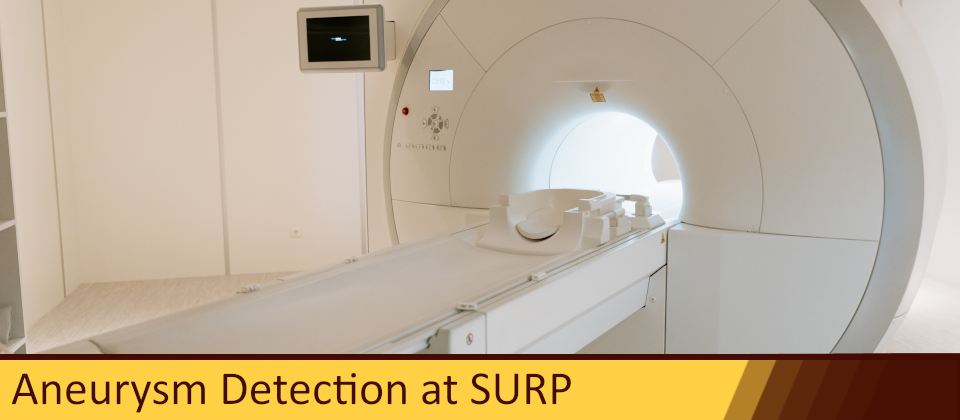Aneurysm Detection at SURP
Aneurysm Detection at SURP
Aneurysm Detection at SURP
The SURP Poster Session served as an opportunity for the students of Rowan’s Computer Science Department to demonstrate the culmination of their work over the summer. Many groups of students showed up to the Poster Session to show off their research projects and what they’ve learned from working on them.
One such group of students is Michael Provenzano, Carter Profico, Felix Hakimi, and Sean Pandolfo. For their SURP research project, these students have been developing a program for detecting aortic aneurysms, the most common and deadly type of aneurysm.
As you may know, an aneurysm occurs when an artery becomes inflated due to a weakening in the artery wall. The term “aortic aneurysm” refers to an aneurysm in the aorta, the large artery that is responsible for carrying blood from your heart to the rest of your body. The aorta is a vital part of your body, and an aneurysm within it can prove fatal. Thus, spotting the telltale signs of an aneurysm and taking the steps to prevent it could be the difference between life and death. Michael, Carter, Felix, and Sean’s project aims to assist in that matter, by helping detect potential aneurysms before they turn lethal.
These three students have developed a program that can be used to analyze a CT scan for potential signs of an aortic aneurysm. This is accomplished in a multi-step process that involves the use of a deep-learning pipeline. Let’s take a closer look at this process and see how it works.
The process starts with feeding the program data from a CT scan. This scan provides the images that the program will analyze in order to parse the presence of aneurysms. First, the program scans one of the images in order to locate the aortic regions. It does this through the use of two different open source detection softwares, called YOLO and FasterRCNN. Next, it crops out the aortic regions to work with them separately. The cropped images are then cleaned up using a technique called U-Net segmentation. These U-Net segmented images are then pasted over the full-size image. This results in a full-size image that specifically highlights the aorta, which is obviously the main point of interest when you’re trying to analyze the aorta.
Repeating this process for every image in the CT scan, the program will eventually have a full collection of U-Net masked images. After that, all of the images can be stacked on top of one another to create a rough 3D model of the aorta. The students also implemented a script that spots and fixes errors in the image detection software, which in turn helps make the 3D model more accurate. However, that part of the project is still incomplete.
The 3D model not only makes for a handy visual on its own, but can also be used to calculate the maximum diameter of the aorta. As stated before, aneurysms cause the artery to inflate, so finding the widest part of the aorta would be your best bet to find an aneurysm. This step is still a work in progress, but the students say they will achieve this by calculating the diameter of the cross-section along the curve of the aorta.
The research project is still ongoing, with plans to improve and expand its functionality over time. Some of their goals for future work include training the program on images of real aortic aneurysms, improving the accuracy of the error-spotting script, and finishing incomplete parts of the pipeline. However, even with all of this work still ahead of them, their research project shows a lot of promise, and their work so far is quite impressive.
That about does it for this week’s SURP project spotlight. However, there’s still plenty more to learn from the students in SURP. If you want to hear more about what Rowan’s CS students accomplished this summer, be sure to stop by soon to read about the other incredible projects that were showcased at the SURP Poster Session.
Written by Cole Goetz | Posted 2022.10.10
